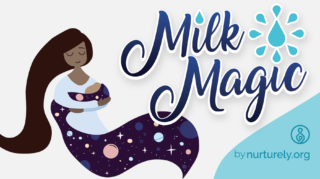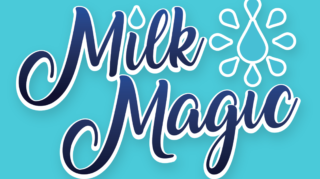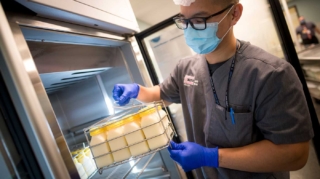As part of our relaunch we are highlighting our staff, volunteers and board members. First up: Monique! Describe your background and what led you t ...
Milk Magic Educators: Latoya
This is part of a series we are doing to highlight our inspirational Milk Magic Educators. To learn more about the program including about how to sig ...
Milk Magic Educators: Tteka
To describe the communities in which I serve, I would say we are resilient and strong birth warriors, because we must battle iatrogenetic medical apartheid and obstetric violence and continue to be dependent on the system that turns a blind eye to our mistreatment especially with regard to medical care. We suffer the highest statistical rates of three of the top five annual preventable killers here in the U.S. (Heart disease, diabetes & cancer) and we suffer the highest statistics for infant mortality and maternal mortality as well. There are so many disparities that interact in the lives of the families I serve such as, initiation of breast/chestfeeding and duration of continued breast/chestfeeding, poverty/financial burdens, food insecurity, job insecurity, stress, psychological trauma as well as other environmental, economic and social disparities that are highly racialized, but also affect other marginalized communities such as LGBTQIA folks, differently-abled families, non-nuclear families and immigrant & refugee families. The communities that I serve are those that are most affected by discrimination and those least likely to receive the equitable support and care they need and deserve.
Milk Magic Educators: Julia
As a doula, student midwife, and mother, I know how hard it is to get access to lactation support when you are not able to pay for classes or consultants. It is also hard for people like me to afford education to provide these services, so the fact that I could join the program and use the curriculum within the non-profit, extending the support these families could get, I thought it was a wonderful opportunity.
Milk Magic Educators: Sterling
When I had my first child I was 21. I was the first one in my family to breastfeed. Through that I saw that there were many women in similar positions. I became the person all of my friends called asking about breastfeeding. I knew that there were things that needed to be addressed. I often tell my clients I aim to provide them with the support and education I wish I had received as a first time mom.
Milk Magic Educators: Pati
Because lactation should not be a privilege. There are many challenges in our society for a parent to be able to accomplish their breastfeeding goals specially for minorities, BIPOC, low income individuals, immigrants, and those with low support. We need to change that and be able to provide support and accessible health education.
Milk Magic Educators: Trina
I’m a mama on a mission. I want to support and encourage mamas along their journey. I want to share the information I’ve learned in hopes to encourage breastfeeding mamas to keep going. There’s a lack of support and quality resources and I want to step in a fill that gap. What started off as a kind gesture, a post here and there, has grown and matured into a passion. I think that human milk is amazing and I want mamas to be able to make the BEST and most informed decision when it comes to feeding their children.
Racial Disparities in Breastfeeding
According to Kimberly Seals Allers, expert breastfeeding advocate and author of “The Big Letdown”, the disparity is due to bias and racism. Research conducted by the Centers for Disease Control and Prevention (CDC) shows that hospital maternity wards “are less likely to help black women initiate breastfeeding after giving birth or offer lactation support following delivery” (Santhanam, 2019). Hospital staff offer black babies formula more often than white babies (Santhanam, 2019), which can be one of the most important predictors of breastfeeding duration (McKinney et al., 2016).
Racism, Birth, & Supporting Black Midwives
In the United States, African-American, Native American and Alaska Native women are about three times more likely to die from pregnancy-related causes compared to white women, according to the Centers for Disease Control and Prevention (CDC), yet sixty percent of all pregnancy-related deaths could be prevented (Rabin, 2019). These statistics hold even when controlling for other factors including income level (Watson, 2019).
Human Milk Sharing – Part II
With the help of a financial gift from Hannah and Zachary Johnson, the UC San Diego Health will create the region’s first breastmilk bank (The San Diego Union-Tribune) led by Dr. Lisa M. Stellwagen, MD. The goals of the bank are “to help mothers breastfeed, to improve breastmilk donation and to ensure that all premature or ill babies in Southern California have access to donor milk” (UC San Diego Health).









